- Home
- H. G. Wells
The Country of the Blind and other Selected Stories Page 49
The Country of the Blind and other Selected Stories Read online
Page 49
4. Poob-bah: The pompous ‘Lord High Everything Else’ in thepopular comic opera The Mikado (1885) by William Schwenck Gilbert (1836–1911) and Arthur Sullivan (1842–1900). This, as with ‘nigger help’ later, is Holroyd’s casual racism, but the story also points towards a more sophisticated unease towards otherraces which Wells and his readers were not free from.
5. Lord Clive… Straits Settlements: Ship named after Robert Clive (1725–74), general whose military victories in India helped establish British rule in the following century. The Straits Settlements were former East India Company-controlled colonial territories along the Strait of Malacca: Penang, and Malacca, in what is now Malaysia, and Singapore.
6. Twelve per cent: The dividend which the railway shareholders were expected to receive.
7. British Solomon: The biblical King Solomon (c. 1000 bc–928 bc), famous for his wisdom, was also associated, especially in Arabic folklore, with stories of supernatural beings. There might also be an echo of the British Solomon Islands in the South Pacific, established as a British protectorate in 1893, as the region of ‘beyond’ from where Azuma-zi might have originated.
8. a meteoric stone: The pre-Islamic Arabs venerated a black stone, said to be of meteoric origin, around which the Kaaba at Meccawas built.
9. anointing of the coils with oil: Applying oil to a body as a mark of respect is a custom in many religions.
THE REMARKABLE CASE OF DAVIDSON’S EYES
1. Wade’s: Investigator (fictional) into the ‘case’ of Davidson.
2. Harlow Technical College… Highgate Archway: Harlow In Essex is over 15 miles north-east from the Highgate Archway. Wells may have been thinking of Holloway although the Northern Polytechnic Institute in Holloway was not opened until 1896.
3. Scott… everyone swore by that personage: Various ‘personages’ have been suggested, from the American Civil War General Win-field Scott (1786–1866) to the author Sir Walter Scott (1771–1832). The OED (2nd edn.) gives 1885 as the first instance of ‘Great Scott’ as an exclamation, citing Tinted Venus by F. Anstey (Thomas Anstey Guthrie (1856–1934)): ‘Great Scott! I must be bad!’, but the expression seems to have been used in 1864 in Eye of the Storm: A Civil War Odyssey, a diary by Private RobertKnox Sneden.
4. hull down: So far away that the hull is below the horizon and cannot be seen.
5. Bishop Berkeley: George Berkeley (1685–1753), Bishop of Cloyne in Ireland, ‘idealist’ philosopher who argued against the distinction of ‘matter’ and ‘spirit’, suggesting that what we believe existsis a product of our sensory perception or the mind of God.
6. penguins: Only found in the southern hemisphere, giving a clue to the whereabouts of Davidson’s perception.
7. Dogs’ Home… King’s Cross: The Dogs’ Home was founded in Holloway in 1860 and moved to its present location in Battersea, south of the river Thames, in 1871. King’s Cross railway stationis to the south of Camden Town.
8. the special Pall Mall: The Pall Mall Budget (where, of course, this story first appeared) was a weekly supplement to the Pall Mall Gazette, London evening paper.
9. group of stars like a cross: The Southern Cross constellation, only visible from the Southern hemisphere.
10. changing views of a lantern: Projected images from ‘magic lantern’ slides dissolving into one another; a popular entertainmentduring the mid nineteenth century. (See also ‘The Story of thelate Mr Elvesham’.)
11. Fulmar: A possibly fictional naval vessel, named after a sea-bird.
12. Fourth Dimension: Wells’s The Time Machine (1895) begins with a discussion of Time as the Fourth Dimension after Length, Breadth and Thickness, but here and in ‘The Plattner Story’ it isseen more as an extra spatial dimension.
13. Saint Pancras installation: The station (between Euston andKing’s Cross stations on Euston Road) designed by William Henry Barlow (1812–1902) was opened in 1868. It and the associated Midland Grand Hotel (opened 1877), designed by George Gilbert Scott (1811–78), were among the glories of Victorian railway architecture.
THE MOTH
1. Periplaneta Hapliia: Latin name for the (fictional) ‘Hapley’s cockroach’.
2. Geological Society: Scholarly and professional society, formed in 1807.
3. burn Sir Ray Lankester at Smith field: Edwin Ray Lankester(1847–1929) was Professor of Zoology at University College London and Professor of Comparative Anatomy at Oxford. A friend of Wells, he wrote the entry on ‘Mollusca’ for the 9the edition of the Encyclopedia Britannica (1875–89). Criminals, traitors and, during the sixteenth century, heretics were executedat Smithfield Market in the City of London.
4. Royal Entomological Society: Scholarly society dedicated to the study of insects, founded 1833.
5. Chamber of Deputies: The Lower House of the French Parliament, since 1946 known as the National Assembly. French politics in the late nineteenth century was often turbulent, with many short-lived governments.
6. Quart. Journ. Entomological Soc: The Royal Entomological Society issued various ‘Proceedings’ and journals, but nothing with this precise title.
7. along Piccadilly… societies abide: Burlington House in Piccadilly is the home of a number of learned scientific societies, including (until 1968) the Royal Society, as well as the Royal Academy of Fine Arts. Wells is joking about the artistic community’s ignorance of the scientific world.
8. ‘Island Nights’ Entertainments’: Collection of stories (1893) byRobert Louis Stevenson (1850–94), which includes ‘The Bottle Imp’.
9. Kipling: Rudyard Kipling (1865–1936), the popular author of poems, short stories and novels. See also note 3 to ‘The Wild Asses of the Devil’.
10. Besant’s ‘Inner House’: Dystopian novel (1888) by Sir Walter Besant (1836–1901).
11. monograph: The original meaning of ‘monograph’ (now ‘a work in one volume’ – OED) was a treatise on a single specialized subject such as a zoological or botanical species.
A CATASTROPHE
1. 4¾d.: Fourpence and three-farthings. In British currency of the time, there were four farthings to a penny, twelve pennies to a shilling and twenty shillings to a pound. ‘Half a crown’ is two shillings and sixpence. A guinea was worth 21 shillings.
2. Bandersnatch: From the poem ‘Jabberwocky’ in Through the Looking Glass (1871) by Lewis Carroll (1832–98). Here, ‘snatch’ evokes the greed of Winslow’s competitors, just as one of his wholesale dealers is named ‘Grab’.
3. Black Care: Term used to signify depression or turn of fortune, from Horace (Quintus Horatius Flaccus (65–8 bc)), ‘post equi-tem sedet atra Cura’ (‘Behind the rider sits black care’), Odes 3.1.40.
4. Y.M.C.A.: The Young Men’s Christian Association was foundedin 1844 to encourage the spiritual and educational development (and later, the physical fitness) of young men. Its roots in the drapery trade make it an obvious alternative to the public-house for Winslow.
5. Christian World: Weekly journal which began publishing in 1857.
6. tempering the wind to the shorn retailer: The proverbial expression ‘tempering the wind to the shorn lamb’ refers to a providential act of mercy.
THE CONE
1. Gehenna: The (Greek) name of a valley outside Jerusalem where fires continually burned to consume rubbish and where pagans allegedly sacrificed children (Jeremiah 19:3–6). It became asynonym for Hell in Christian writing.
2. penthouse brows: Overhanging eyebrows, possibly from the libretto to the opera King Arthur (1691) by John Dryden (1631–1700) and Henry Purcell (1659–95), IH.1.30: ‘My Pent-HouseEye-Brows, and my Shaggy Beard’.
3. Hanley and Etruria: Hanley is one of the six ‘Potteries’ towns In Staffordshire which make up the present Stoke-on-Trent. Etruria, west of Hanley, was where Josiah Wedgwood (1730–95) settledupon for his pottery factory, and Wells lived there for a few months in 1888. Burslem (mentioned later) is another of the‘Potteries’ towns.
4. season of ‘play’: Term used in industrial relatio
ns in the northand midlands to signify lack of work through illness or strike action.
5. Jeddah: Port city in Saudi Arabia, near the holy city of Mecca. The company is probably reminiscent of the Shelton Iron Steel and Coal Company in Etruria.
6. pillars of cloud by day: When Moses led the Israelites out of Egypt, God guided them ‘by day in a pillar of a cloud… and by night in a pillar of fire’ (Exodus 13:21).
7. Newcastle: Newcastle-under-Lyme, in Staffordshire, just west of the ‘Potteries’ towns.
THE ARGONAUTS OF THE AIR
1. South-Western main line: Constructed in the 1830s, the London and South-Western Railway network ran from Vauxhall in London through Wimbledon, Surbiton and Woking in Surrey toSouthampton on the south coast. A number of suburban railwaysbranched off and connected to this line. From Wimbledon, a lineran via Worcester Park to Leatherhead and Guildford.
2. Maxim: Sir Hiram S. Maxim (1840–1916), inventor of an early machine gun and a pioneer of heavier-than-air flight, on whom Monson, his ‘successor’, is obviously based. In 1894, before acrowd of invited guests which included Wells, Maxim flew two hundred feet before crashing. See also note 10.
3. over Trafalgar Square: Trafalgar Square in central London commemorates the naval victory of the Battle of Trafalgar (1805) where Horatio, Lord Nelson (1758–1805) met his death. As an iconic location it would be expected that the first aircraft would be seen over the square in the same way as French pioneers of aviation in the early 1900s made sure that they were seen near the Eiffel Tower.
4. Isle of Wight trippers: The island on the south coast of England off Southampton, was a popular holiday destination reached by the railway network (line) alluded to earlier. The working – andlower-middle-class ‘trippers’ would be entertained and amusedby Monson’s failures.
5. Romeike: Henry Romeike (dates unknown) was the founder of a press cuttings agency in the 1880s.
6. ceased from troubling: Echo of Job 3:17: ‘There the wicked cease from troubling; and there the weary be at rest.’
7. Folly: Often used for a costly and striking but essentially useless enterprise, such as an ornamental building.
8. Esher: Five miles west of Worcester Park.
9. aluminium rod: Although the very light metal aluminium wasfirst extracted in 1825, it was expensive to produce until 1886 when the process of electrolysis was perfected.
10. Lilienthal’s methods: Otto Lilienthal (1848–96), German experimenter with gliders, who died following a crash. His experiments with flying were based upon the close observation of the flight of birds, while Maxim attempted to generate power by other means, such as the propeller. Monson is trying to combine the two methods and keep his aircraft gliding like a gull through mechanical adjustments of the wings and the force generated by the engines and propeller.
11. petroleum: Petroleum (or gasoline), extracted from oil, became increasingly important as a fuel in the second half of the nineteenth century and the development of the internal combustionengine in automobiles boosted the idea of applications in powered flight. The first successful powered flight using a gasoline engine was Orville Wright’s on 17 December 1903.
12. eminent literary people from Haslemere: Haslemere in Surrey is close to Hindhead, where the writers Grant Allen (1848–99) and Richard Le Gallienne (1866–1947), friends of Wells, lived.
13. Albert Hall: Concert hall in Kensington, opened 1871 in memory of Prince Albert (1819–61).
14. Imperial Institute: South Kensington, London. Founded 1881 as a museum/research institute. Part of it was incorporated into Imperial College of Science, Technology and Medicine in 1899.
15. Royal College of Science: See note 4 to ‘A Slip under the Microscope’. ‘Formerly’ implies that it was damaged or destroyed in the crash.
UNDER THE KNIFE
1. Regent’s Park Canal: Running through the northern end of Regent’s Park, the canal was constructed in 1816 to connect the Grand Union Canal to the London Docks. The Broad Walk is part of the park’s formal gardens. The ‘crescent’ is Park Crescent between Marylebone Road and Portland Place.
2. a black barge… white horse: The images here may be taken from Greek mythology (souls of the dead were ferried across the River Styx) and the Bible (in Revelation 6:8 Death is described as riding on a ‘pale horse’).
3. winged globes: The symbol of the winged sun disc probably originated in Assyria but was used frequently in ancient Egypt.
4. a thousand years was but a moment: An echo of ‘For a thousand years in thy sight are but as yesterday’ (Psalm 90:4), adapted by Isaac Watts (1674–1748) in the popular hymn ‘Oh God, Our Help In Ages Past’: ‘A thousand ages in thy sight / Are like an evening gone’.
5. the hour had come… a noise of many waters…‘There will be no more pain’: References to Revelation 3:3: ‘thou shalt not know what hour I will come upon thee’; 19:6: ‘as the voice ofmany waters’; 21:4: ‘neither shall there be any more pain’.
A SLIP UNDER THE MICROSCOPE
1. News from Nowhere: Utopian novel (1890) by William Morris (1834–96). See also note 15.
2. Oratory clock: At Brompton Oratory, in Brompton Road near the Royal College of Science.
3. mixed classes: Men and women; women were beginning to receive a scientific education in some institutions. The University of London accepted women for graduation in all faculties in 1878. Oxford and Cambridge took until 1920 and 1948 respectively to do the same.
4. College of Science: The Royal College of Science in South Kensington, London, formed in 1881 as the Normal School of Science by amalgamating courses of the Royal School of Mines with the teaching of other science subjects. One of its aims was to train school science teachers. Students from unprivileged backgrounds like Hill (and Wells himself, 1884–7) were recruited by means of state scholarships. The Normal School was renamed the Royal College of Science in 1890 and is now part of Imperial College, London.
5. blue paper: The offer of a scholarship to candidates who haddone well in school examinations.
6. a guinea a week: Something under the average income of a skilled worker.
7. seventh standard of the Board school: The highest class of the Board Schools, established in 1870 to educate working-classchildren.
8. Carlyle: Thomas Carlyle (1795–1881), historian and writer on social issues. His books included Sartor Resartus (1833–4; see also note 11 to ‘The New Accelerator’), History of the French Revolution (1837) and On Heroes (1841).
9. a paying student: Paying her own fees, in contrast to Hill who is receiving a State grant.
10. Browning: Robert Browning (1812–89), poet.
11. Harvey Commemoration Medal: An apparently fictional award in memory of William Harvey (1578–1657), who pioneered research into the circulation of the blood.
12. Longfellow… Mrs Hemans: The American poet Henry Wads-worth Longfellow (1807–82), Alfred, Lord Tennyson (1809–92), Alexander Pope (1688–1744) and Percy Bysshe Shelley (1792–1822) were all ‘canonical’ poets. They are contrasted with more popular versifiers Eliza Cook (1818–89) and Mrs (Felicia) Hemans (1793–1835).
13. ‘mugger’: ‘Crammer’ or ‘swot’ who memorizes facts for examinations rather than learning with full understanding or enjoyment.(But Hill is also being looked down upon by the Oxford man because of his humbler origins.)
14. counted to him for righteousness: Cf. Psalm 106:31: ‘And that was counted unto him for righteousness.’
15. Bernard Shaw’s… Walter Crane’s: George Bernard Shaw (1856–1950), playwright and socialist activist, was a friend andrival of Wells. As well as being a novelist, poet, and socialist activist, William Morris’s printing and household designs were issued through his Kelmscott Press and the Morris & Co. design firm. Walter Crane (1845–1915) was celebrated for his children’s book illustrations and his cartoons and art supporting the Socialist cause.
16. ‘dined late’: A characteristic of a ‘gentleman’.
17. finger-bowl sh
ibboleths: Only the wealthy and cultivated used finger-bowls to wash during meals. Judges 12:5–6 relates how the pronunciation of ‘shibboleth’ (Hebrew, ‘ear of grain’) was used to distinguish between the Gileadites and their enemies the Ephramites, who were slaughtered when they could not pass the test. It now refers to specialist jargon or customs used to distinguish members of a privileged group (like Wedderburn) fromoutsiders (like Hill).
18. Ruskin: John Ruskin (1819–1900), art critic and influential writer on social issues. In Sesame and Lilies (1865) he argued that men’s roles were public, while women’s influence was more to be felt in the private sphere, an attitude common in Victoriantimes.
19. aerated bread shop: The Aërated Bread Company began by introducing carbon dioxide into dough, to make the bread rise faster. In 1864 it started to serve food and drink in its shops. The ABC‘tea shops’ introduced into Victorian society a cheap and (forwomen) unthreatening alternative to eating and socializing in the home or public-houses and lasted well into the second half of the twentieth century.
20. Bradlaugh and John Burns: Charles Bradlaugh (1833–91) advocated birth control and was prevented from taking his seat in Parliament for five years because as an atheist he refused to take a religious oath. John Burns (1858–1943) was a socialist and trade union leader who was elected to Parliament in 1892.
21. Hindu god: Like the statue of a Hindu god positioned for all to see.
22. Q. Jour. Mi. Sci.: Quarterly Journal of Mining Science.
23. threepenny or ninepenny classics: Cheap editions of classic books.
24. The Meistersingers: Die Meistersinger von Nürnberg, an operaby Richard Wagner (1813–83), first performed 1868.
THE PLATTNER STORY
1. Eusapia’s: The medium Eusapia Palladino (1854–1918) was the subject of a number of investigations during the 1880s and 1890s. Numerous reputable scientists (such as the physicist Oliver Lodge (1851–1940)) attended her seances and were convinced of her genuine ability. Others considered her an ingenious but blatant fraudster, and Wells is mocking the alleged gullibility of the scientific investigators who took her side.

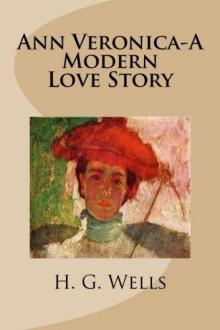 Ann Veronica: A Modern Love Story
Ann Veronica: A Modern Love Story The Time Machine
The Time Machine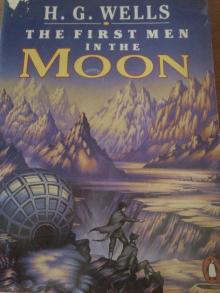 The First Men in the Moon
The First Men in the Moon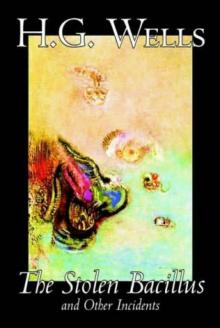 The Stolen Bacillus and Other Incidents
The Stolen Bacillus and Other Incidents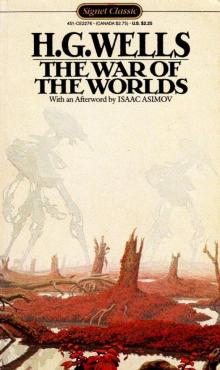 The War of the Worlds
The War of the Worlds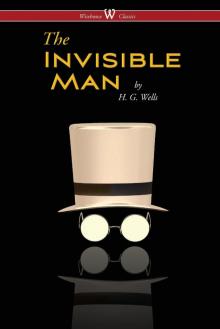 The Invisible Man: A Grotesque Romance
The Invisible Man: A Grotesque Romance The Island of Doctor Moreau
The Island of Doctor Moreau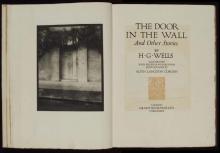 The Door in the Wall, and Other Stories
The Door in the Wall, and Other Stories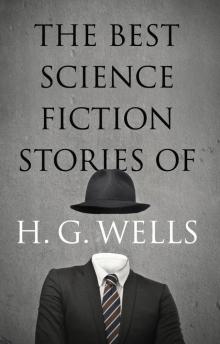 The Best Science Fiction Stories of H G Wells
The Best Science Fiction Stories of H G Wells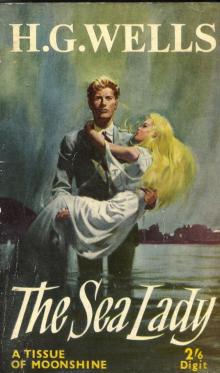 The Sea Lady
The Sea Lady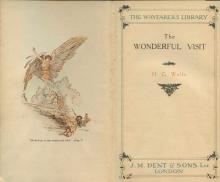 The Wonderful Visit
The Wonderful Visit Love and Mr. Lewisham
Love and Mr. Lewisham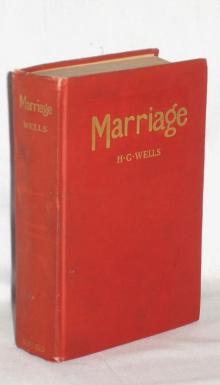 Marriage
Marriage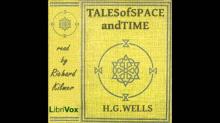 Tales of Space and Time
Tales of Space and Time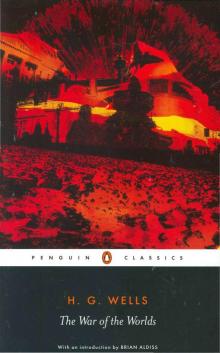 The War of the Worlds (Penguin Classics)
The War of the Worlds (Penguin Classics)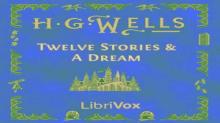 Twelve Stories and a Dream
Twelve Stories and a Dream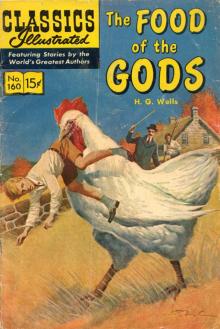 The Food of the Gods and How It Came to Earth
The Food of the Gods and How It Came to Earth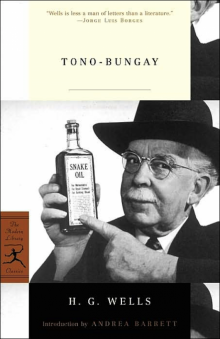 Tono-Bungay
Tono-Bungay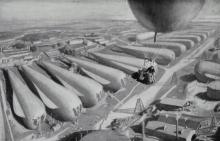 The War in the Air
The War in the Air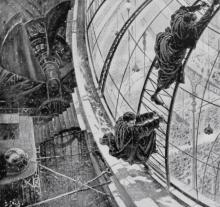 The Sleeper Awakes
The Sleeper Awakes The Country of the Blind and Other Stories
The Country of the Blind and Other Stories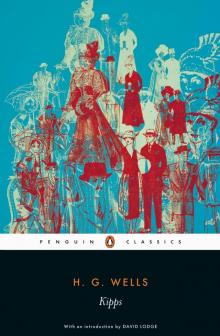 Kipps
Kipps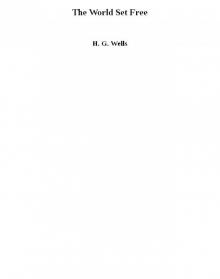 The World Set Free
The World Set Free The Country of the Blind and other Selected Stories
The Country of the Blind and other Selected Stories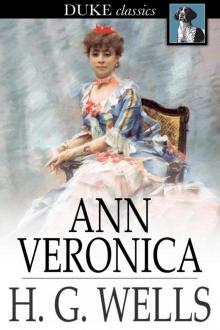 Ann Veronica
Ann Veronica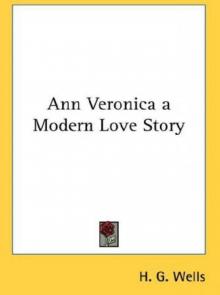 Ann Veronica a Modern Love Story
Ann Veronica a Modern Love Story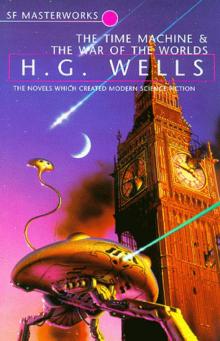 The Time Machine and The War of the Worlds
The Time Machine and The War of the Worlds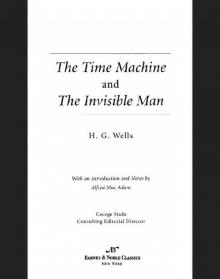 Time Machine and The Invisible Man (Barnes & Noble Classics Series)
Time Machine and The Invisible Man (Barnes & Noble Classics Series) The Time Machine and The Invisible Man
The Time Machine and The Invisible Man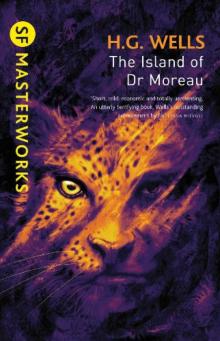 The Island of Dr. Moreau
The Island of Dr. Moreau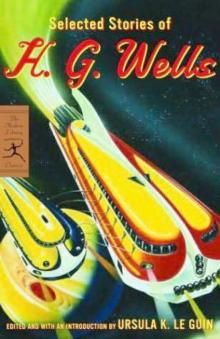 Selected Stories of H. G. Wells
Selected Stories of H. G. Wells Island of Dr. Moreau
Island of Dr. Moreau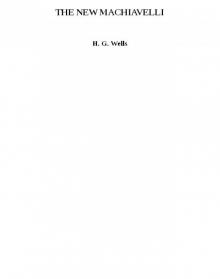 THE NEW MACHIAVELLI
THE NEW MACHIAVELLI